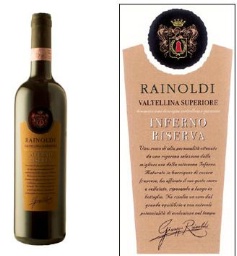
External search
Google (images)
Wine Advocate
Wine Spectator
Burghound
Wine-Searcher
Vintages
2019
2018
2017
2016
2015
2013
2012
2011
2010
2009
2007
2006
2005
2004
2003
2002
2001
2000
1999
1997
Show more
From this producer
Show all wines
All tasting notes
|
| Drinking Windows and Values |
| Drinking window: Drink between 2007 and 2015 (based on 16 user opinions) |
| Community Tasting History |
| Community Tasting Notes (average 90.5 pts. and median of 90 pts. in 2 notes) - hiding notes with no text | | | Tasted by Loren Sonkin on 7/3/2011 & rated 92 points: Sineann wines and whole bunch of other stuff (Our home): Really drinking well. This is Nebbiolo and drinks liked a solid Barolo. Showing a nice complexity, there is still some cherry fruit. Lovely nose of cherries, tar and roses. It does not have the intensity of Barolo, but is developing quite well. (3332 views) | | | Tasted by David_T on 7/1/2011 & rated 89 points: Seductive nose of bright cherries and a bit of tar. Palate of sour cherries and earth. Fairly acidic yet but well integrated tannins. (1970 views) |
| Rainoldi Producer WebsiteNebbioloNebbiolo is a red grape indigenous to the Piedmont region of Italy in the Northwest. The grape can also be found in other parts of the world, though they are not as respected.
Nebbiolo is often considered the "king of red wines," as it is the grape of the famed wines of Barolo DOCG, Barbaresco DOCG, and Roero DOCG. It is known for high tannins and acidity, but with a distinct finesse. When grown on clay, Nebbiolo can be very powerful, tannic, and require long aging periods to reach its full potential. When grown on sand, the grape exhibits a more approachable body with more elegant fruit and less tannins, but still has high aging potential.
"Nebbiolo" is named for the Italian word, "nebbia", which means "fog", in Italian and rightfully so since there is generally a lot of fog in the foothills of Piedmont during harvest.
Nebbiolo is a late-ripening variety that does best in a continental climate that boasts moderate summers and long autumns. In Piedmont, Nebbiolo is normally harvested in October.
More links:
Varietal character (Appellation America) | Nebbiolo on CellarTrackerItaly Italian Wines (ItalianMade.com, The Italian Trade Commission) | Italian Wine Guide on the WineDoctorLombardia Vini di LombardiaValtellinaValtellina is an alpine valley in the far north of Lombardy, bordering Switzerland, from the village of Berbenno to Tirano. It's been producing wine for over 2000 years. Today it is known for its bright, cherry-scented wines made from the Nebbiolo grape variety, known here as Chiavennasca (after the nearby town of Chiavenna). These come in two forms: the standard Rosso di Valtellina and its powerful, dried-grape Sfursat (Sforzato) form. With a few years of bottle age, gamey, leather-like notes will develop, and the crimson will turn to garnet with a brick-orange rim – the visual trademark of Nebbiolo-based wines. Situated in the Rhaetian Alps, about 60 miles NE of Milan, some of the steepest slopes in Europe with the most striking landscapes of the Alps. Requires mostly hand-harvesting. The soils here are typically alluvial: gravelly, well drained and rich in silica. They are littered with larger stones, which gather heat throughout the day and release it in the evening. Many producers here also make wines using the Alpi Retiche IGT designation.
The thin skin of the Nebbiolo grape, unlike the varieties used to make Amarone, and the practice of minimizing the amount of tannin extracted during vinification, unlike the traditional style of vinifying Barolo, creates a Nebbiolo wine unlike any other. The bright, cherry flavors and rose and violet aromas that are unmistakably Nebbiolo are still there, but the tannic backbone is much lighter, less obtrusive. This is alpine Nebbiolo. It has more in common with the Nebbiolo (locally called Spanna) grown in the Val D’Aosta or the Nebbiolo from Gattinara or Ghemme in the alpine hills of Alto Piemonte, than it does with Barolo or Barbaresco.
On weinlagen-info |
|




